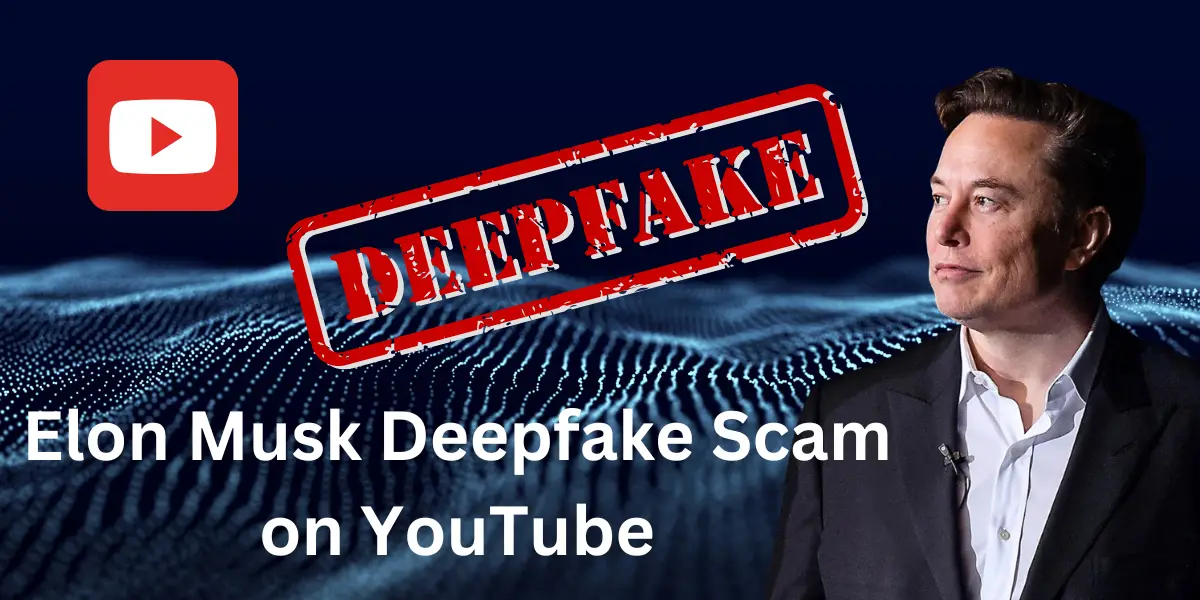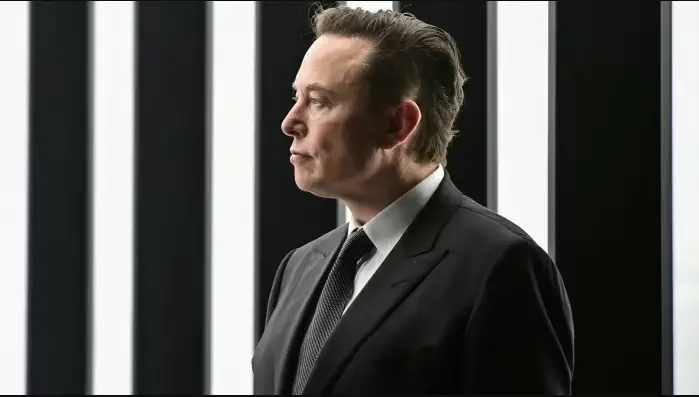Elon Musk Deepfake Scam on YouTube

Discuss the rising trend of deepfake technology and its misuse in online scams, specifically focusing on recent AI-generated videos of Elon Musk on YouTube that have been linked to crypto scams. Highlight the widespread attention the issue has gained and its implications for online security and misinformation.
This article delves into the concerning trend of AI-generated videos featuring Elon Musk, used in cryptocurrency scams on YouTube. It covers the methods, risks, and preventive measures associated with these deepfake scams, underscoring the importance of awareness and collective action in tackling such digital deceptions.
Table of Contents
Understanding the Elon Musk Deepfake Scam

Provide a concise explanation of what the Elon Musk deepfake scam is, how it has manifested on YouTube, and why it is a concern. Discuss the use of deepfake technology to create realistic videos of Elon Musk, misleading viewers for fraudulent purposes.
- Creation of Deepfakes: Explain how AI is used to create realistic fake videos of Elon Musk.
- Targeting YouTube Audiences: Discuss how scammers target YouTube’s massive user base with these videos.
- Objective of the Scams: Elaborate on the scammers’ aim to mislead viewers into fraudulent cryptocurrency investments.
AI Technology in Scamming: Method and Purpose
One of the most watched eclipse livestreams on YouTube is a fake SpaceX stream featuring deepfake @elonmusk promoting a crypto scam promising "2X return". Currently 164K live viewers.😅 pic.twitter.com/BZXb5JvwiO
— Jason Paladino (@jason_paladino) April 8, 2024
The Elon Musk deepfake scam represents a troubling convergence of advanced artificial intelligence technology and online fraud. This scam, predominantly surfacing on YouTube, involves the use of AI-generated videos featuring Elon Musk, the CEO of SpaceX and a prominent tech figure. These deepfakes are incredibly realistic, making it challenging for viewers to distinguish them from genuine footage. The primary aim of these scams is to lure unsuspecting individuals into cryptocurrency schemes by exploiting Musk’s popularity and the credibility associated with his persona.
AI Technology in Scamming: Method
The method involves employing sophisticated AI algorithms capable of replicating Musk’s facial movements, voice, and mannerisms with high accuracy. This technology, initially developed for legitimate purposes like film and gaming, has been repurposed by scammers. By manipulating digital footage, these AI-generated videos fabricate scenarios where Musk appears to endorse cryptocurrency investments or announce giveaways, thus misleading viewers.
AI Technology in Scamming: Purpose
The purpose of using AI technology in these scams is twofold. Firstly, it capitalizes on Elon Musk’s influential status in the tech and financial worlds to lend credibility to the scam. Secondly, it exploits the novelty and sophistication of AI, which can make the deception more convincing to the untrained eye. The end goal is to trick individuals into sending cryptocurrency to the scammers, under the guise of lucrative investment opportunities or exclusive offers.
The Crypto Scam Strategy
At the heart of the Elon Musk deepfake scam on YouTube is a cunning cryptocurrency strategy. These scams typically follow a pattern where AI-generated videos of Musk promote supposed investment opportunities or cryptocurrency giveaways.
- Use of Deepfake Videos: AI-generated clips of Elon Musk falsely endorsing crypto investments.
- Promises of High Returns: Offering doubled returns or lucrative profits to entice victims.
- QR Codes and Links: Embedding QR codes and links in the videos, directing to fraudulent websites.
- Fake Testimonials: Utilizing fabricated testimonials and endorsements to boost credibility.
- Impersonation of Official Channels: Creating channels that appear to be official or associated with Elon Musk or SpaceX.
- Live Stream Manipulation: Hosting live streams to create a sense of urgency and authenticity.
- Chatbots and Fake Accounts: Using chatbots and fake accounts to simulate community endorsement and engagement.
Decoding the YouTube Misinformation Tactics
YouTube, as a platform with massive reach and influence, has become a fertile ground for spreading misinformation through AI deepfakes. The Elon Musk deepfake scam exemplifies how scammers exploit YouTube’s features to conduct their fraudulent activities. These tactics involve creating and disseminating AI-generated videos that are almost indistinguishable from real content. Scammers capitalize on YouTube’s algorithms, which prioritize viewer engagement, allowing these fake videos to surface on numerous feeds.
Additionally, the use of live streams with chat features creates a dynamic environment where scammers can interact with viewers in real time, further lending credibility to the scam. This misuse of YouTube’s functionalities not only deceives viewers but also challenges the platform’s ability to manage and mitigate such sophisticated forms of deception.
Risks Associated with AI Deepfakes
Financial Exploitation
The most immediate risk posed by AI deepfakes in scams like the Elon Musk cryptocurrency scheme is financial exploitation. Viewers, deceived by the realistic appearance of these videos, may be tricked into sending money or cryptocurrency to scammers. This can lead to significant financial losses, especially for individuals who are not well-versed in identifying such fraudulent schemes.
Erosion of Trust
AI deepfakes contribute to a broader erosion of trust in digital content. As these technologies become more sophisticated and accessible, the ability to discern truth from fiction online becomes increasingly difficult. This erosion of trust extends beyond individual scams, impacting public confidence in digital media, legitimate news sources, and even the subjects of the deepfakes themselves.
Amplification of Misinformation
AI deepfakes are powerful tools for amplifying misinformation. They can be used to spread false narratives rapidly across social media platforms, potentially influencing public opinion or causing confusion. In politically or socially charged environments, this could lead to significant real-world consequences, from swaying elections to inciting violence.
Guidelines to Spot and Avoid AI Scams
To navigate the treacherous waters of AI scams, it’s crucial to be equipped with the right knowledge and tools. Here are some guidelines:
- Verify Source Authenticity: Always check the authenticity of the source. For YouTube videos, verify if the channel is official and has a history of legitimate content.
- Look for Inconsistencies: Pay attention to any inconsistencies in the video or narrative that might suggest it’s not genuine.
- Be Skeptical of Unrealistic Promises: If an offer seems too good to be true, such as the promise of doubled investments, it likely is.
- Use Technology to Your Advantage: Utilize available tools and software designed to detect deepfakes and manipulated media.
- Educate Yourself About AI and Deepfakes: Stay informed about the capabilities and limitations of AI-generated content.
- Avoid Acting on Impulse: Before making any investment or sending money, take time to research and reflect.
- Report Suspicious Content: If you encounter a potential scam, report it to the platform to help protect others.
YouTube's Response to Deepfake Challenges
Enhanced Content Moderation
YouTube has significantly upgraded its content moderation systems, incorporating advanced AI and machine learning algorithms designed to identify and flag deepfake videos. These technologies analyze video content for signs of manipulation, such as irregular speech patterns or visual inconsistencies, thereby helping to filter out fraudulent content before it reaches a broad audience.
Policy Enforcement and Updates
YouTube has also revised its policies to specifically address the challenges posed by deepfakes. This includes stricter enforcement against misleading and deceptive content, especially when it involves financial scams or impersonation. Channels found violating these policies face penalties ranging from demonetization to outright removal from the platform.
Collaboration with Experts and Authorities
To enhance its response to deepfakes, YouTube is collaborating with cybersecurity experts, researchers, and law enforcement agencies. This collaboration allows for a more comprehensive approach to tackling deepfakes, combining YouTube’s technological capabilities with external expertise and legal frameworks. It also aids in tracing and taking action against the perpetrators behind these scams.
The Importance of Public Vigilance
Public vigilance plays a critical role in combating the issue of AI-generated deepfake scams, like the Elon Musk cryptocurrency fraud on YouTube. In the digital age, where technology evolves rapidly, individuals must be proactive in educating themselves and remaining cautious about the content they encounter online.
The onus is on the public to develop a healthy skepticism towards too-good-to-be-true offers and sensationalist content. By learning about the existence and characteristics of deepfakes, individuals can better spot these forgeries. Awareness and education are key, as informed viewers are less likely to fall prey to these scams. This includes understanding the basics of cryptocurrency, as well as the common tactics used by scammers.
Reporting suspicious content is also a vital aspect of public vigilance. User reports play a significant role in alerting platforms like YouTube to potential scams, aiding in their quick removal and preventing further spread. Additionally, sharing information about these scams within communities can protect others from falling victim.
Conclusion
Summarize the key points discussed in the article, reaffirm the risks posed by AI-generated deepfake scams, and reinforce the call for vigilance and collective responsibility in combating these issues.

